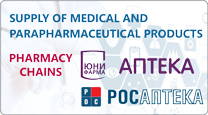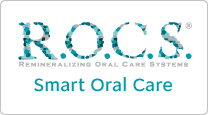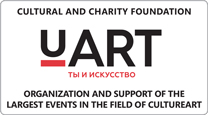26 February 2016
Haruo Morita: The Technological Development Is Not Advancing Medicine as It Should
 Morita manufactures top-class
equipment known for a high quality proven over decades. The company was
established in Japan, in 1916, by Mr. Junichi Morita. Today, Morita is run
already by the third generation of its founder’s family. The company’s CEO is
Haruo Morita, who, like his predecessors, strives to maintain the corporate
traditions, which is known to be of fundamental value in Japan. In Japan Mr.
Morita heads all trade associations related to the dental industry and is an
influential figure and a reputable specialist. This year, Haruo Morita came to
Russia at the invitation of Unident.
Morita manufactures top-class
equipment known for a high quality proven over decades. The company was
established in Japan, in 1916, by Mr. Junichi Morita. Today, Morita is run
already by the third generation of its founder’s family. The company’s CEO is
Haruo Morita, who, like his predecessors, strives to maintain the corporate
traditions, which is known to be of fundamental value in Japan. In Japan Mr.
Morita heads all trade associations related to the dental industry and is an
influential figure and a reputable specialist. This year, Haruo Morita came to
Russia at the invitation of Unident.
As we can see, today’s purchasing power in Russian dental
clinics is far from its height. Morita’s products are in high demand primarily
in the countries where specialists focus on technological capabilities and
quality and not on the equipment price. That is why we started our talk with
Morita CEO Haruo Morita with a most vital question – prices for equipment.
— Today, few Russian dental practitioners can
afford investing in equipment. Does it make sense to invest in costly equipment
in the current conditions on the Russian market?
— Let’s say that all tools used in dental practices can be
divided into two categories — traditional basic tools and cutting-edge
equipment and facilities that are still being under development and are
periodically modified. Dental units belong to the first category, and their
improvement today is already impossible. Technological innovations in this
industry are rather infrequent. That is why the price competition comes to the
fore and specialists tend to choose cheaper units. In these conditions, certain
manufacturers try to differentiate their product lines in terms of quality,
functionality and design. Morita’s products are known for their ultra-high
quality resting on craftsmanship and rigorous process control. Our units are
designed to create an atmosphere for the patient to feel comfortable and for
the dentist to be able provide full treatment. All our tools are not only
pleasant to the eye; they also considerably ease off the physical and mental
burden for practitioners thanks to the optimal layout and arrangement of
ergonomically-designed components. Hence, Morita’s equipment helps to create
conditions, in which dentists use dental units in order to provide continuous
optimal care to their patients.
Speaking about cutting-edge equipment such as cone beam
computed tomography units and lasers we can say that they often seem to be
expensive because it is primarily about innovative technological solutions. But
such equipment is indispensable in dentistry for treatment and diagnostic
needs. The benefits gained by dental practitioners who use such equipment far
outweigh the costs. That is why our products are used worldwide. We naturally
want to contribute to the development of the dental industry in Russia to
enable practitioners to enjoy the benefits offered by our tools, not only in
the context of prices but also in a long-term outlook for further
collaboration.
— Which problems in the development and
manufacturing of dental equipment need, in your opinion, to be addressed now as
a matter of priority?
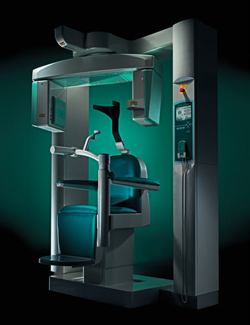 —
We should take steps that would further bring us to medical achievements. It is
important to explore into compatibility and upgrade of the equipment and tools
used by specialists at present. Owing to the advancement in information and
computer technologies, recently there has been an innovation-driven boom in
dentistry. In some sectors, new venture companies are commercializing
diagnostic technologies and therapy methods, equipment and systems that can be
regarded not just as advanced but even breakthrough. In many cases, however,
such ventures launch only one technology developing it as a separate business.
So, we can’t say that they are always driven by the concept of “developing
dentistry as a whole”. In this regard, it is important that manufacturers that
historically follow the right ethical public health policies also make effort
and actively engage in the development of products with the use of advanced
technologies. Because nowadays the technological development is not advancing
medicine as it should.
—
We should take steps that would further bring us to medical achievements. It is
important to explore into compatibility and upgrade of the equipment and tools
used by specialists at present. Owing to the advancement in information and
computer technologies, recently there has been an innovation-driven boom in
dentistry. In some sectors, new venture companies are commercializing
diagnostic technologies and therapy methods, equipment and systems that can be
regarded not just as advanced but even breakthrough. In many cases, however,
such ventures launch only one technology developing it as a separate business.
So, we can’t say that they are always driven by the concept of “developing
dentistry as a whole”. In this regard, it is important that manufacturers that
historically follow the right ethical public health policies also make effort
and actively engage in the development of products with the use of advanced
technologies. Because nowadays the technological development is not advancing
medicine as it should.
— The latest model of the 3D Accuitomo 170 cone
beam computer tomography unit was brought to the market several years ago. At
present, the device knows no equals and is still the most advanced dental
tomography unit in the world. How long do you think it will remain number one
technological innovation?
— Morita was the first-ever company to start developing and
manufacturing dental cone beam computed tomography units. As the computer
performance has sharply increased lately, several manufacturers have started
producing similar equipment. But towards 1992, when we started designing this
system, the computer performance was still too low and we had to integrate our
own software technologies in order to obtain images suitable for clinical use.
The core technology that was developed at that time is still far ahead of
today’s competing technologies and only our systems provide an ultra-high image
quality. Of course, in the course of time, manufacturing of sensors will cost
less and X-ray units will go mainstream. But we aim at continuing to offer the
highest quality providing for a top-class result – by selecting and including
only the best components in 3D Accuitomo. Certainly, the balance between
technical excellence and price will tire out at some point, as it happens with
other products. But even in this case we will still maintain our current status
and enhance our equipment to meet the needs of top-class specialists.
 — As early as in 1964
your company revolutionized the concept of dental units. Morita offered dental
practitioners to provide care to patients lying down in a relaxed position.
More than 50 years have passed since the first unit based on the “12−hour
treatment” concept appeared on the market. How popular have such units become
in the world for these last fifty years?
— As early as in 1964
your company revolutionized the concept of dental units. Morita offered dental
practitioners to provide care to patients lying down in a relaxed position.
More than 50 years have passed since the first unit based on the “12−hour
treatment” concept appeared on the market. How popular have such units become
in the world for these last fifty years?
— It took much time for dental practitioners to understand
and accept the concept underlying the Spaceline unit. It was accepted into
frequent practice after a number of scientific workshops featuring Dr. Beach’s
idea that a dental practitioner should acquire theoretical knowledge and apply
it in his or her own practice. However, a delay in the execution of appropriate
documents led to various interpretations of the “12−hour treatment” concept.
There appeared numerous units offered by different manufacturers that picked up
the idea, which triggered off some kind of boom. Simplified systems came into
use, which earlier stayed in the background during the technological upsurge in
the 1970−s and later.
In the 1960−70s, the number of dental practitioners who
understood the value of this concept started growing worldwide, alongside the
appearance of related educational institutions. Little by little, people got
used to a situation where a dentist works in a sitting position upon a patient
lying down on his or her back. But after the Japanese yen sharply rose in value
in the mid 1980−s, prices for Spaceline units abroad became too high and the
number of our units in use decreased. Moreover, as this concept was widely
counterfeited by many manufacturers in a superficial way, dentists started
suffering from backache and could not provide high-quality care to their
patients. This, of course, affected the dissemination of the concept. The
Spaceline chair appeared on the market more than 50 years ago but the basic
concept remains the same. We keep promoting it and developing equipment that we
can sell abroad.
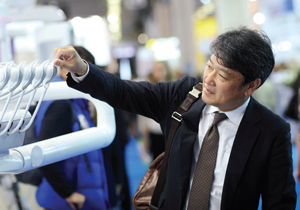 — Your equipment is supplied to the leading medical centers of the
world. Tell us, please, about some current projects that are most interesting
for you.
— Your equipment is supplied to the leading medical centers of the
world. Tell us, please, about some current projects that are most interesting
for you.
— Such projects generally involve parodontosis treatment and
regenerative medicine. Also, we do much to develop services related to patient
care, specifically, homecare, because the demand for such services is growing
in Japan – the country’s population is getting older. In the foreseeable
future, we plan to complete research that will show the effect of oral care on
the general health conditions and longevity. This research should give rise to
new dental technologies.
The interview was conducted by Irina
Syngayevskaya
10 March 2018
The DRC Group has conquered the markets of 45 countries of the world with their products, made using their own unique research and production technologies. The company’s range of products includes oral care brands, cosmetics, medicinal products, and intimate hygiene brands. The company owns 50 patents that are valid throughout the world. All of this is thanks to the breakthroughs made at their own research laboratories. Marketing promotions are based on the clinical effectiveness of the products. How exactly did this business model lead to the company’s success? This is what we discussed with Svetlana Matelo, PhD and the CEO of the DRC group of commercial and industrial companies
17 July 2014
Italian manufacturer MyRay is a part of Cefla group of companies which is one of the leading dental holdings globally. The company manufactures a large scope of visualization systems developed specifically for dentistry. The objective of MyRay is to improve diagnostics, make it more accurate and modern. At September exhibition Dental Expo in Moscow, the company demonstrated its last developments. We are showing an interview with Nikola Tonelli, Export Director of Cefla Dental Group.
18 February 2014
Carestream Dental Diagnostic equipment is playing an important role in the world market. A leading manufacturer of radiographic equipment, the company is one of the key suppliers of innovative solutions in the industry.
16 February 2014
Cefla Group is one of the best manufacturers of dental equipment in Europe. Cefla Dental Group products are marketed in all areas of dentistry.
Back
 Morita manufactures
Morita manufactures  —
We should take steps that would further bring us to medical achievements. It is
important to explore into compatibility and upgrade of the equipment and tools
used by specialists at present. Owing to the advancement in information and
computer technologies, recently there
—
We should take steps that would further bring us to medical achievements. It is
important to explore into compatibility and upgrade of the equipment and tools
used by specialists at present. Owing to the advancement in information and
computer technologies, recently there  — As early as in 1964
your company revolutionized the concept of dental units. Morita offered dental
practitioners to provide care to patients lying down in a relaxed position.
More than 50 years have passed since the first unit based on the “12−hour
treatment” concept appeared on the market. How popular have such units become
in the world for these last fifty years?
— As early as in 1964
your company revolutionized the concept of dental units. Morita offered dental
practitioners to provide care to patients lying down in a relaxed position.
More than 50 years have passed since the first unit based on the “12−hour
treatment” concept appeared on the market. How popular have such units become
in the world for these last fifty years? — Your equipment is supplied to the leading medical centers of the
world. Tell us, please, about some current projects that are most interesting
for you.
— Your equipment is supplied to the leading medical centers of the
world. Tell us, please, about some current projects that are most interesting
for you.





